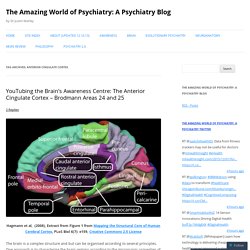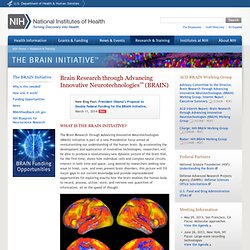

L'Univers est-il accessible à nos sens. Enter the "i of the vortex" Llinas - Con el alma en las neuronas. Es posible reconstruir un cerebro humano con computadores y hacerlo hablar, pensar, sentir amor o tener una percepción de sí mismo?

La pregunta tiene que ver con la naturaleza del cerebro. Hay quienes piensan que es posible, pero yo pienso que no. Las ideas que la gente tiene respecto del cerebro son más que todo de tipo computacional. No se han dado cuenta de que el cerebro es ante todo un aparato capaz de sentir, capaz de internalizar información a nivel molecular. El sistema nervioso es en ciertos aspectos como un computador, pero en otros definitivamente no. A lo máximo a lo que se puede aspirar es a hacer algunas simulaciones… Simulaciones sí se pueden hacer: un robot que camine por ahí y reconozca alguna cosa y vaya a cogerla. No somos ángeles, somos animales inteligentes. El premio Nobel Wolfgang Pauli, por ejemplo, alcanzó a trabajar de la mano de Carl Jung en el sentido de que la psique y la materia se encontraban en una estrecha unidad psicofísica. NDEs and REM.
Anterior cingulate cortex. Hagmann et al, Creative Commons 2.5, Plos Biology As part of a series on the Brodmann Areas, this is a brief overview of some of the literature on Brodmann Area 25 – the Anterior Cingulate Cortex (ACC).

The ACC is functionally and anatomically closely related to the Insular Cortex (see also reviews below on the Insular Cortex). The ACC contains a special type of cell called the Von Economo Neuron (see this review article). These cells also found in the Insular Cortex and are massively interconnected with cells throughout the brain and although present in other primates are significantly more abundant in humans (although obviously brain volume is correspondingly increased in humans).
Appendix – Articles Reviewed in relation to Brodmann Areas or other Structures Brodmann Area 1 – Somatosensory Cortex An Investigation of D3 Receptors and Brodmann Area 1 in Schizophrenia YouTubing the Somatosensory Cortex. Near-Death Experiences. Scientific research has tried to unlock the secrets of death and what happens to consciousness after death.

Our scientific understanding of the mind / brain chemistry involved in the processes of death remains relatively limited. In spite of the findings reported from these studies, little emphasis has been placed on the loss of consciousness. The results of the loss and recovery of consciousness experiments in healthy humans may provide insight into the normal processes in the brain that occurs in association with NDEs. This report focuses on the mind/brain events associated with acceleration gravitationally-induced loss of consciousness, also known as G-LOC, in completely healthy individuals. Acceleration of gravitational stress is a unique aspect of flying fighter aircraft during aerial combat maneuvering. The gravitational-stress reduces blood flow to the head and causes pooling of blood in the abdomen and extremities which result in G-LOC. BRAIN Initiative. NIH Home > Research & Training What is the BRAIN Initiative?

The Brain Research through Advancing Innovative Neurotechnologies (BRAIN) Initiative is part of a new Presidential focus aimed at revolutionizing our understanding of the human brain. By accelerating the development and application of innovative technologies, researchers will be able to produce a revolutionary new dynamic picture of the brain that, for the first time, shows how individual cells and complex neural circuits interact in both time and space. Long desired by researchers seeking new ways to treat, cure, and even prevent brain disorders, this picture will fill major gaps in our current knowledge and provide unprecedented opportunities for exploring exactly how the brain enables the human body to record, process, utilize, store, and retrieve vast quantities of information, all at the speed of thought.
A map of overall task-fMRI brain coverage from the seven tasks used in the Human Connectome Project. Meeting Information. Human Connectome Project. Brain Mind Institute. Backyard Brains. Predicting the Future by Smelling. 0 Flares Twitter 0 Facebook 0 Reddit 0 StumbleUpon 0 LinkedIn 0 inShare0 Google+ 0 0 Flares × We all know certain smells can bring memories back to life.

A christmas tree, your grandma’s baking scents or your first brand of deodorant can take your mind straight back to other times. But these smells can also help us to predict the future, science shows. Simulated Brain. The Sequoia supercomputer at Lawrence Livermore National Laboratory, recently crowned world champion of supercomputers, just simulated 10 billion neurons and 100 trillion connections among them--the most powerful brain simulation ever.

IBM and LLNL built an unprecedented 2.084 billion neurosynaptic cores, which are an IBM-designed computer architecture that is designed to work like a brain. IBM was careful to say it didn't build a realistic simulated complete brain-- "Rather, we have simulated a novel modular, scalable, non-von-Neumann, ultra-low power, cognitive computing architecture," IBM researchers say in an abstract (PDF) of their new paper. It meets DARPA's metric of 100 trillion synapses, which is based on the number of synapses in the human brain. This is part of DARPA's cognitive computing program, called Systems of Neuromorphic Adaptive Plastic Scalable Electronics (SyNAPSE). To do it, IBM used its cognitive computing chips, which the company unveiled last year.
Brenda Milner.